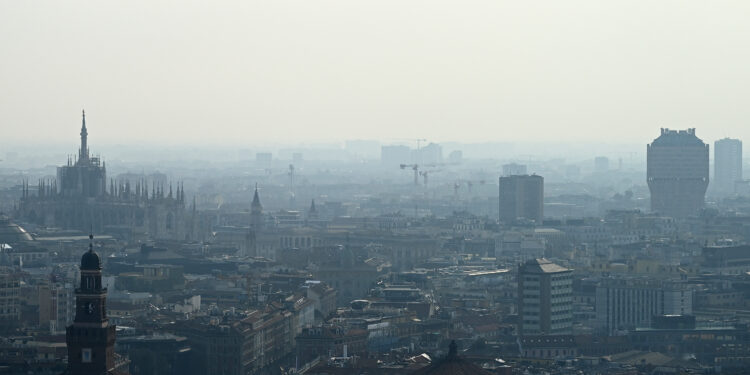Brussels – Air quality in Europe continues its slow improvement, but air pollution still poses the greatest danger to environmental health. It is the leading cause of premature death in the EU linked to the environment, responsible for some 300,000 premature deaths a year. According to the European Environment Agency, 96 percent of Europeans living in cities are exposed to concentrations of fine particulate matter (PM2.5 and PM10) above WHO guidelines. But Croatia, Italy, and Poland still have concentrations above even the milder limits imposed by Brussels.
The EEA published the report on air quality for 2022-23: the 2022 data are final and validated by reporting countries, while the 2023 analysis is based on provisional data. The first conclusion is that “air quality in Europe is improving, but EU standards are still not met across Europe.” In 2022, only 2 percent of European monitoring stations recorded fine particulate concentrations above the annual EU limit value: Croatia, Italy and Poland.
If we change the measurement units and look at concentrations above the EU daily limit value for PM10, these are found mainly in the Po Valley and some regions of Eastern Europe. The same goes for PM2.5, even more harmful particles, those with a diameter of 2.5 µm or less. But while in former Soviet bloc countries, the cause lies in solid fuels, such as coal and wood, which “are widely used for domestic heating and in some industrial plants and power plants,” in Northern Italy, the high concentrations “are due to the combination of a high density of anthropogenic emissions, and also meteorological and geographical conditions that favor the accumulation of air pollutants in the atmosphere and the formation of secondary particles.”
However, an improvement can be seen in the Po Valley when looking at the 2022 and 2023 data. Indeed, the number of monitoring stations exceeding or approaching the current annual limit value imposed by the EU, namely 25 µg/m³, is decreasing. In 2022, only Milan and the municipality of Spinadesco, in the province of Cremona, exceeded the EU standard, while several locations along the Turin-Venice highway recorded values between 20 and 25 µg/m³. Provisional data for the following year suggest a greater circumscription of the phenomenon to the metropolitan provinces of Milan and Turin, with a worrying figure of 156 µg/m³ reached in the Mirafiori industrial area in the Piedmontese capital.

The problem, however, is that this slight improvement is not enough: not only do the data recorded in the Po Valley remain far from the levels outlined in the World Health Organization’s guidelines, but they do not even conform to the new air quality standards for 2030 agreed at the EU level in February, which are close to the- less stringent-WHO standards. For example, for the two pollutants most harmful to human health, fine particulate matter and nitrogen dioxide (NO2), the annual limit values are to be more than halved by the end of the decade, from 25 µg/m³ to 10 µg/m³ and from 40 µg/m³ to 20 µg/m³, respectively.
Of all the monitoring stations in northern Italy included in the EEA report, only Moggio, in the province of Lecco, recorded an annual concentration below 10 µg/m³. But Moggio is located in the Valsassina Plateau, 900 meters above sea level. The Italian government managed to get from Brussels the possibility of a derogation to meet the new targets until January 1, 2040, for areas where compliance by 2030 would be “unfeasible due to specific climatic and orographic conditions” or where reductions can be achieved “only with a significant impact on existing domestic heating systems.” An exemption that seems inevitable but at the expense of the residents of the Po Valley.
English version by the Translation Service of Withub







![Un motoscafo in Svezia. Nell'Ue si pone un problema di mancato riconoscimento delle patenti nautiche [foto:
Matti Blume, Wikipedia Commons. Copyright: Creative Commons Attribution-Share Alike]](https://www.eunews.it/wp-content/uploads/2024/11/motoscafo-Saltsjoen_Stockholm_P1090679-120x86.jpg)
